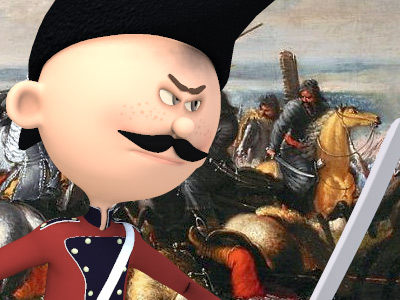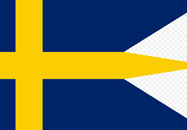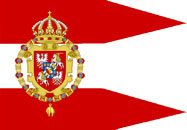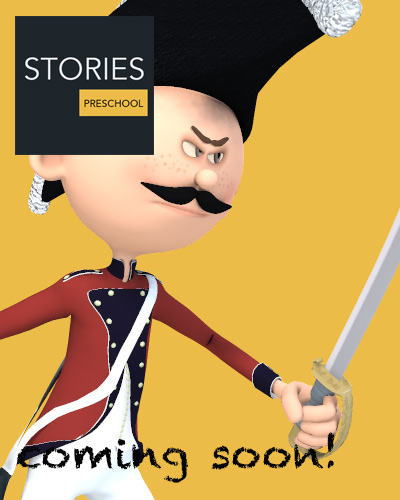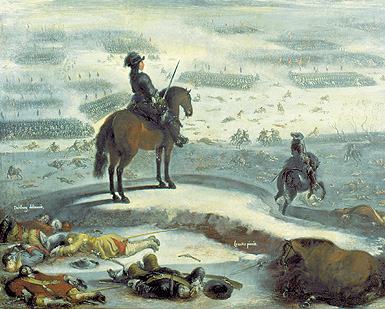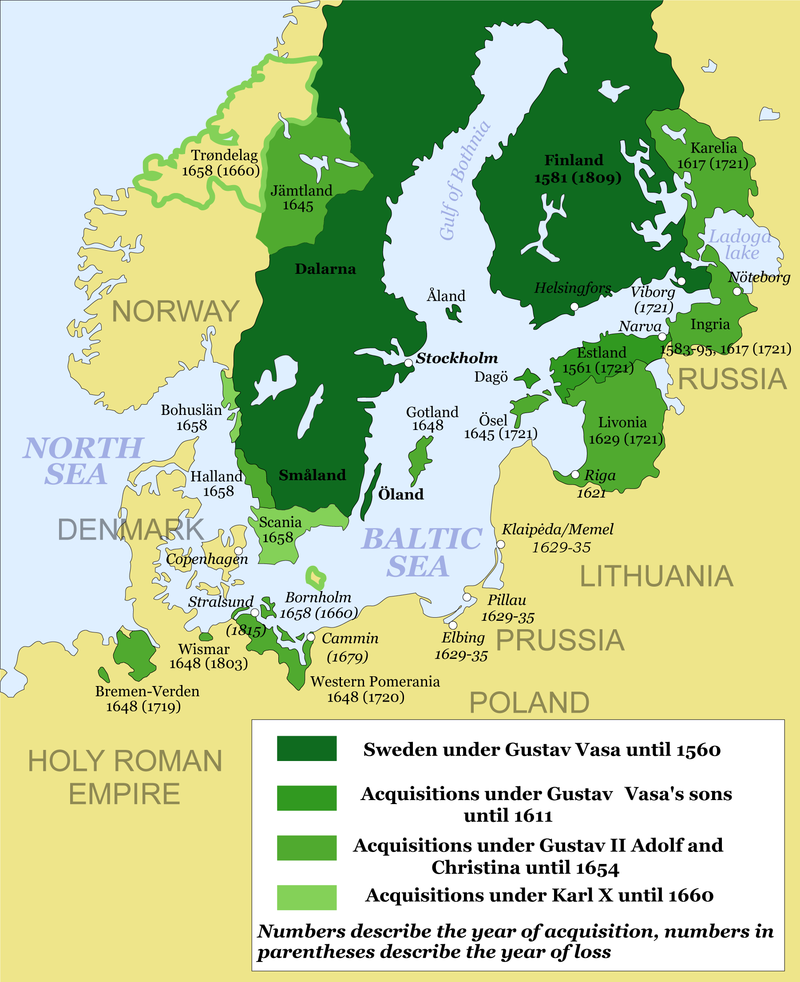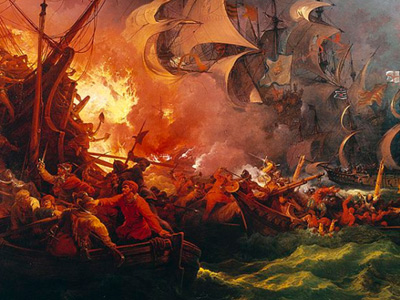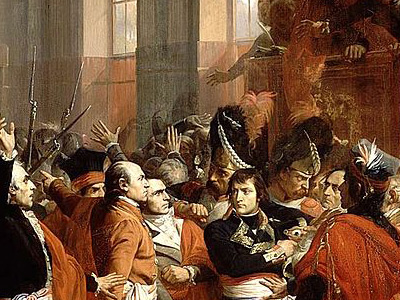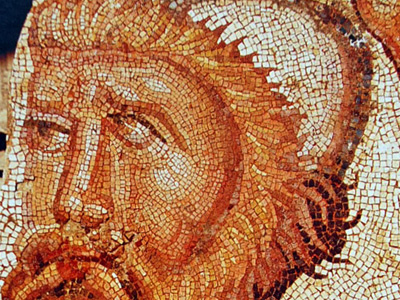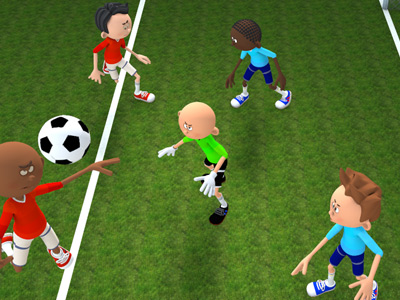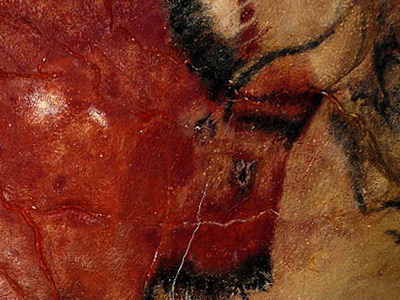Second Northern War (1655–1660)
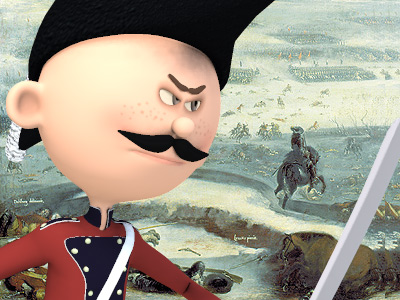
Brandenburgian-Swedish alliance and Russia's war on Sweden
On 25 June 1656, Charles X Gustav signed an alliance with Brandenburg: the Treaty of Marienburg granted Greater Poland to Frederick William in return for military aid. While the Brandenburgian elector was free of Swedish vassalage in Greater Poland, he remained a Swedish vassal for the Duchy of Prussia. Brandenburgian garrisons then replaced the Swedish ones in Greater Poland, who went to reinforce Charles X Gustav's army. On 29 June however, Warsaw was stormed by John II Casimir, who had drawn up to Charles X Gustav with a force of 28,500 regulars and a noble levy of 18,000 to 20,000. Thereupon, Brandenburg actively participated in the war on the Swedish side, prompting John II Casimir Vasa to state that while his Tartars already had the Swedes for breakfast, he would now take Frederick William into custody, where neither sun nor moon would shine.
Already in May 1656, Alexis of Russia had declared war on Sweden, taking advantage of Charles being bound in Poland, and Livonia, Estonia and Ingria secured only by a Livonian army of 2,200 infantry and 400 dragoons, Magnus de la Gardie's 7,000 men in Prussia, and 6,933 men dispersed in garrisons along the Eastern Baltic coast. Alexis invaded Livonia in July with 35,000 men and took Dünaburg.
In late July, Danzig was re-inforced by a Dutch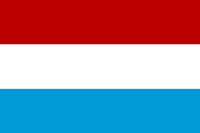 The Dutch Republic was a confederation that existed from 1579, during the Dutch Revolt, to 1795. It was a predecessor state of the Netherlands and the first fully independent Dutch nation state. Although the state was small and contained only around 1.5 million inhabitants, it controlled a worldwide network of seafaring trade routes. The income from this trade allowed the Dutch Republic to compete militarily against much larger countries. It amassed a huge fleet of 2,000 ships, initially larger than the fleets of England and France combined. garrison, and a combined Danish and Dutch fleet broke the naval blockage imposed on Danzig by Charles X Gustav. On 28–30 July, a combined Brandenburgian-Swedish army was able to defeat the Polish–Lithuanian army in the Battle of Warsaw, forcing John II Casimir to retreat to Lublin. In August, Alexis' army took Livonian Kokenhausen (Koknese), laid siege to Riga and Dorpat (Tartu) and raided Estonia, Ingria and Kexholm.
The Dutch Republic was a confederation that existed from 1579, during the Dutch Revolt, to 1795. It was a predecessor state of the Netherlands and the first fully independent Dutch nation state. Although the state was small and contained only around 1.5 million inhabitants, it controlled a worldwide network of seafaring trade routes. The income from this trade allowed the Dutch Republic to compete militarily against much larger countries. It amassed a huge fleet of 2,000 ships, initially larger than the fleets of England and France combined. garrison, and a combined Danish and Dutch fleet broke the naval blockage imposed on Danzig by Charles X Gustav. On 28–30 July, a combined Brandenburgian-Swedish army was able to defeat the Polish–Lithuanian army in the Battle of Warsaw, forcing John II Casimir to retreat to Lublin. In August, Alexis' army took Livonian Kokenhausen (Koknese), laid siege to Riga and Dorpat (Tartu) and raided Estonia, Ingria and Kexholm.
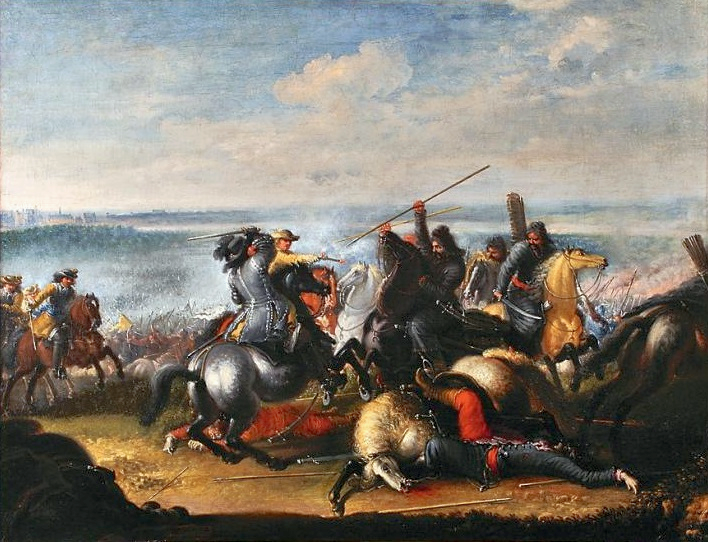
Battle of Warsaw
On 4 October, John II Casimir stormed Łęczyca in Greater Poland before heading for Royal Prussia, and on 8 October, Wincenty Korwin Gosiewski with 12,000 to 13,000 Lithuanian and Crimean Tartar cavalry overran a Brandenburgian-Swedish force in the Battle of Prostken in Ducal Prussia. Gosiewski then ravaged Ducal Prussia, burning 13 towns and 250 villages, in a campaign that entered folklore because of the high death toll and the high number of captives deported to the Crimea.
On 22 October, Gosiewski was defeated by Swedish forces in the Battle of Filipów and turned to Lithuania. Also on 22 October, besieged Dorpat surrendered to Alexis, while the Russian siege of Swedish-held Riga was lifted. John II Casimir meanwhile took Bromberg (Bydgoszcz) and Konitz in Royal Prussia, and from 15 November 1656 until February 1657 stayed in Danzig, where a Swedish siege had to be lifted due to Dutch intervention, just 55 kilometers away from Charles X Gustav's quarters in Elbing.
HISTORY
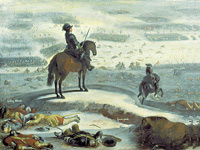
RESOURCES
This article uses material from the Wikipedia article "Second Northern War", which is released under the Creative Commons Attribution-Share-Alike License 3.0.
© Stories Preschool. All Rights Reserved.
